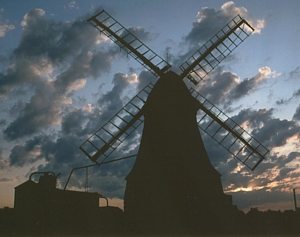
| 
| Living in such a large city I tried very hard not to get claustrophobic. It was difficult to adjust to that, but during my second and third year in Berlin I did. It only took 20 to 25 minutes to get from one end of the city to the other, depending on who was driving, of course. Berlin's trains were absolutely amazing, in that they were usually on time, and very seldom broke down. 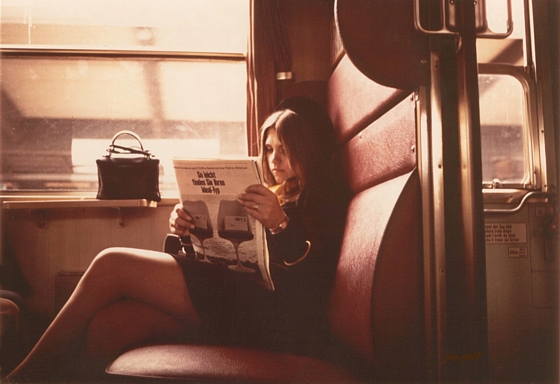
Trains were good for more than transpor-
tation! "Girl on a Train" was one of my favorite 1966 photos, which won a top place award in some advertising photo contest in New York about fifteen years ago. The money did not mean anything, it was a distinct honor to win top recognition for this shot.
_
| 
| 
|

| 
| A windmill in Berlin? Sure, why not? While on duty at
Rudow I wandered around the outside perimeter looking
for those Commie spies and agents who were always trying
to climb the fences and get into our security compounds.
I came upon this photo op, but didn't catch any spies.
. 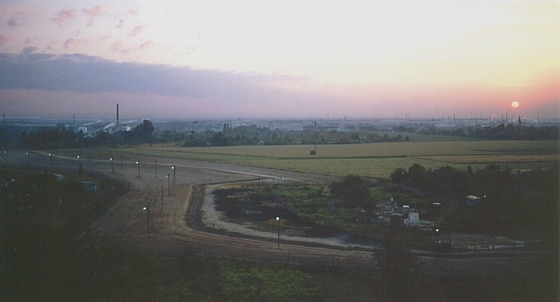
Sunrise at Rudow, near what we called Site 4. East Berlin is on the other side of
the border lights, right; west is on the left. It always gave me an eerie, uneasy
feeling knowing that politics and monetary necessity was the only thing preventing
the two cities from combining into one, and would kill anyone trying to escape
outside of the Communist dictatorship over the wall, or through barbed wire.
_ 
"The wall was strong, yet it began to crumble
when the voice of freedom was finally heard,
and the opportunistic dictators died." This
pencil sketch was given to me by a dear old
friend, Paul Nonnast, former artist and illus-
trator for Time Magazine, who came to Louisville
to retire in the late 1980's. Paul died in 1992
after retiring. This photo is in remembrance.
_

"Look Komrad, up in the sky. Is it a bird, a plane, or Super Ruskie?" Nyet, it is only those crazy damn ASA spooks with wings trying to listen in on all the talk and goings on around the city and throughout the Communist bloc countries. "Da, their antennae is that not so big enough to hear that we say, huh?" "Nyet!"
_
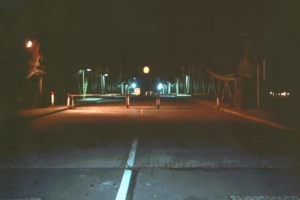
Freedom Bridge was actually the prisoner trading bridge.
It crossed Lake Wannsee and was controlled by the Russian
contingent that monitored the trading of prisoners from
the east to the west. One of our ASA guys was victim
enough to get traded on this bridge. The colonel started
to leave the Russian linguist with the Ruskies after he
was caught in Moscow several months after he took what
was termed an European out, which allowed him to travel
Europe, but not Russia!
_
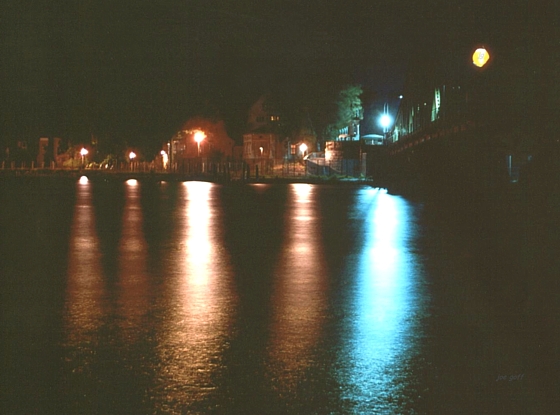
"Reflections of East Berlin," taken below Freedom Bridge, was another award winning photograph, but I could never understand why. The contest photo was a black and white print, see below, which Herr Schmidt, the old German photo lab instructor in the basement of Andrews Barracks, urged me to enter into a European Theater military contest. This time the money was important to me, a whopping $15, and I got my photo in the "Stars and Stripes." The fifteen smackers was well spent at the NAAFI club and exchange, the French EM Club, and the Stuttgarter Platz, all in the same night! Thank you Ron Casteel!
.
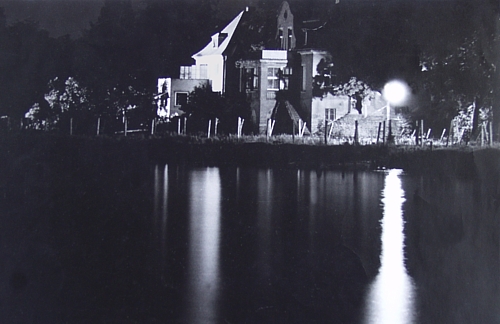
A group of us, including Casteel, decided to swim across the Wannsee one night after a couple of hours in the NCO El Oso club swilling Beck's. Little did we know that under the water was barbed wire and mines which could be triggered by an accidental bump. I once saw a goose disintegrate near this same locale as it ducked under the water for what might possibly have been a meal, but the goose ended up being total piece meal! I opted for taking a photo instead of going for a dip. Underwater mines; barbed wire? And to think, the war had been over for twenty-two years!
.
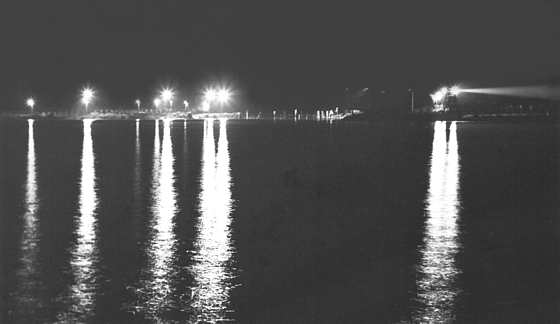
More border lights on the Wannsee, and they were not put up for night swimmers to find their way. If you ventured, or strayed, into the night waters, it was definitely at your own risk. There were no lifeguards along this stretch of Berlin's lake separating east from west.
When I first arrived in Berlin it was very intimidating knowing that the city was closed to the rest of the free world, and you could only travel within its confines. After the first six to eight months, that intimidating feeling became an ordinary day to day thought process, which I lived with and paid no attention to for the rest of the time I was there. I felt I had to acclimate myself that way, or I would go totally nutso and become claustrophobic.
Photo Page Sieben | 
| 
|


